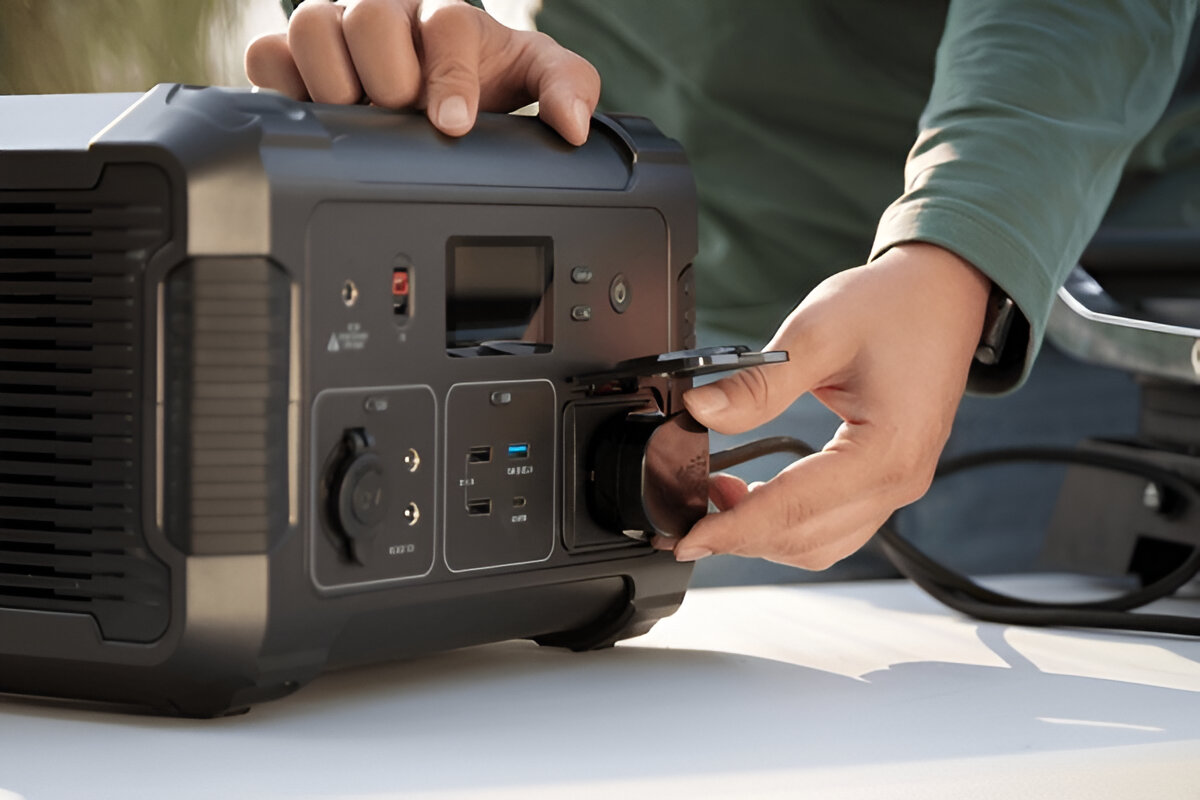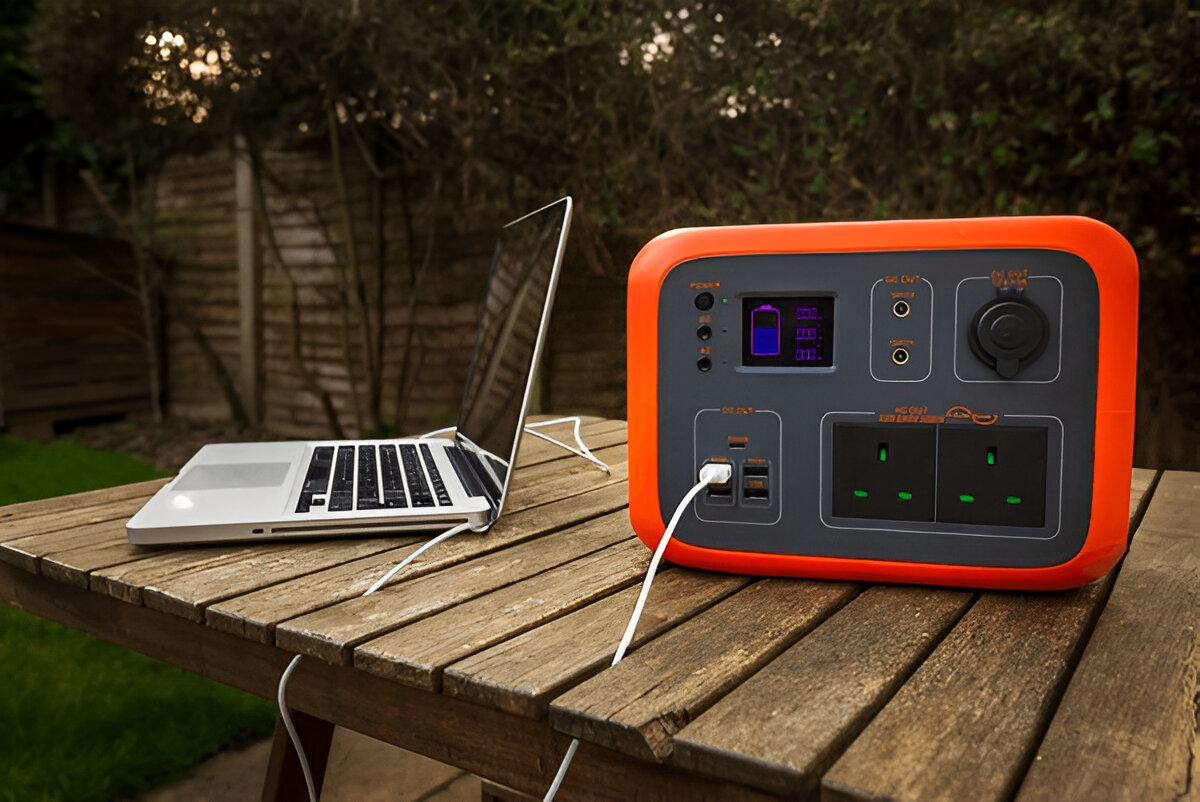
Why You Need a Portable Power Station

Portable power stations bridge the gap between traditional gas generators and simple battery packs. They deliver clean, quiet energy without fumes and can recharge via solar panels, wall outlets, or car ports. Key benefits include:
- Versatility: Power laptops, phones, mini-fridges, medical devices, and more.
- Portability: Lightweight designs and integrated handles make transport easy.
- Eco-friendly Operation: Zero emissions when recharged by solar energy.
- Safety: Built-in surge protection and pure sine wave inverters safeguard sensitive electronics.
How We Chose and Tested
To identify the best portable power stations, our team evaluated dozens of models from leading brands. We focused on:
- Battery Capacity (Wh): Determines how long you can run devices.
- Output Options: AC outlets, DC ports, USB–C, and USB outputs.
- Recharge Speed: Wall, car, and solar recharge times.
- Build Quality & Portability: Weight, dimensions, and handle design.
- Value for Money: Features relative to price point.
We conducted real-world testing, powering laptops, drones, CPAP machines, and lights to verify manufacturer claims. Learn more about Top 6 Smartwatches
Top 6 Portable Power Stations
1. Jackery Explorer 1000
Capacity: 1002Wh | AC Output: 1000W (2000W peak)
The Jackery Explorer 1000 remains a top choice for its balanced capacity and weight. At just 22 lbs, it’s easy to carry yet can power a mini-fridge for over 16 hours or charge a laptop 8 times. Dual USB-C ports support fast charging, and the built-in MPPT controller optimizes solar recharging. The intuitive LCD displays input/output and remaining run time. Cons include no wireless charging pad and a relatively high price tag.
2. Goal Zero Yeti 6000X
Capacity: 6071Wh | AC Output: 2000W (3500W peak)
For off-grid adventures or emergency home backup, the Yeti 6000X delivers massive capacity. It can run a full-size fridge for a day or keep medical devices operational overnight. Equipped with Wi-Fi connectivity, you can monitor and control the unit via a smartphone app. The heavy-duty build and integrated wheels make it semi-portable. Downsides are its 106-lb weight and premium cost, best suited for serious users.
3. EcoFlow DELTA 2
Capacity: 1024Wh | AC Output: 1800W (2700W peak)
EcoFlow’s fast-charging DELTA 2 can recharge from 0 to 80% in just 50 minutes via AC. It supports six AC outlets and a total of 1800W continuous output, enough for power tools and kitchen appliances. Weighing 26 lbs, it boasts a solid handle and durable housing. The downside is its shorter battery life per charge compared to some rivals, but the speedy recharge makes up for it.
4. Anker 757 PowerHouse
Capacity: 1229Wh | AC Output: 1500W (3000W peak)
Anker’s 757 PowerHouse stands out with its robust 1229Wh battery and clean sine wave output. It features dual wireless charging pads on top and multiple USB-C ports supporting 100W output. Recharging via solar panels takes about 4–6 hours in full sun. At 27 lbs, it’s slightly heavier but comes with a convenient LED display and power station app. The main drawback is limited DC ports for camping setups.
5. Bluetti EB70
Capacity: 716Wh | AC Output: 1000W (2000W peak)
The Bluetti EB70 hits a sweet spot between size and power. At 21.4 lbs, it’s highly portable and can power household essentials like routers, lamps, and lamps for up to 8 hours. It supports pass-through charging, letting you power devices while recharging the unit. The built-in MPPT controller accelerates solar input. Downsides include moderate capacity and a bulkier design compared to ultra-light models.
6. Rockpals 300W Portable Power Station
Capacity: 280Wh | AC Output: 300W (600W peak)
Ideal for short trips and light use, the Rockpals 300W is compact at just 7 lbs. It’s perfect for charging smartphones, tablets, and small cameras. The 280Wh capacity delivers roughly 4–5 full phone charges. It features multiple output ports, including USB-C and AC. The main limitations are low capacity and no fast-charge USB-C. However, its budget-friendly price makes it an excellent entry-level option.
Comparison Chart
Below is a quick look at how these models stack up:
| Model | Capacity (Wh) | AC Output | Weight | Price Range |
|---|---|---|---|---|
| Jackery Explorer 1000 | 1002 | 1000W | 22 lbs | $$$ |
| Goal Zero Yeti 6000X | 6071 | 2000W | 106 lbs | $$$$$ |
| EcoFlow DELTA 2 | 1024 | 1800W | 26 lbs | $$$$ |
| Anker 757 PowerHouse | 1229 | 1500W | 27 lbs | $$$$ |
| Bluetti EB70 | 716 | 1000W | 21.4 lbs | $$$ |
| Rockpals 300W | 280 | 300W | 7 lbs | $$ |
Buying Guide: What to Consider
Selecting the right portable power station depends on your use case. Keep these factors in mind:
- Capacity (Wh): Higher capacity means longer run times but added weight.
- Output Ports: Ensure enough AC/DC/USB outputs for your devices.
- Recharge Options: Fast wall charge vs. solar panel compatibility.
- Portability: Weight, handles, and form factor matter for travel.
- Safety Features: Surge protection, pure sine wave inverters, and temperature control.
- Price vs. Value: Balance features with your budget.
Tips for Maintaining and Using Your Portable Power Station
- Store in a cool, dry place to extend battery life.
- Avoid fully draining the battery regularly; keep it above 20%.
- Use recommended solar panels and charging cables.
- Periodically update firmware if the manufacturer offers improvements.
- Inspect ports and housing for damage before each use.
Conclusion
Investing in a portable power station opens up possibilities for outdoor adventures, remote work, and emergency preparedness. From the lightweight Rockpals 300W for casual use to the robust Goal Zero Yeti 6000X for full home backup, our top picks cover diverse needs and budgets. Consider your power requirements, recharge methods, and portability demands to choose the best fit. Stay charged wherever life takes you in 2025 and beyond!










Leave a Reply